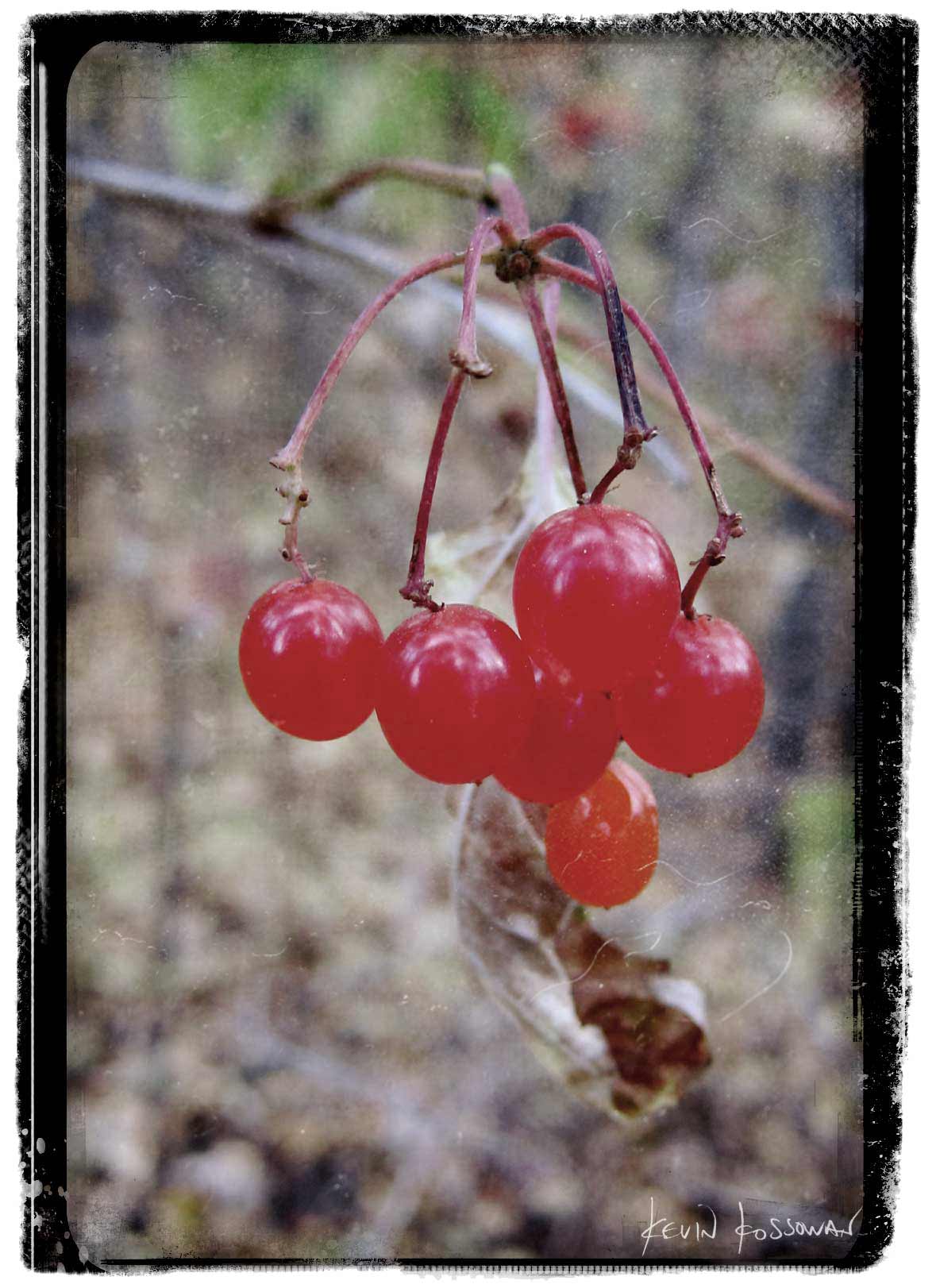
The Highbush Cranberry (Viburnum trilobum) has had a role in numerous food cultures in Canada, and so is also known variously as kalyna (Ukrainian),pembina (French Canadian) and ni-pimina-na (Cree). It is native to Canada, and more specifically the area around Edmonton, in Alberta, in fact, even giving this area the nickname “Kalyna Country.”
The plant itself grows about 4 metres tall, with rough, grey bark. Fruiting begins after approximately five years. Small, white flowers grow into the fruits, clusters of oblong red drupes containing a single, white seed.
Highbush cranberries are unmistakable when ripe. They have a pungent aroma of sweaty socks, much like a ripened French cheese. The bright red berries begin to turn translucent after the frosts, which help to develop the sweetness and aroma of the fruit.
Highbush cranberries ripen in September and are mostly foraged. Farming is very limited, largely in part to lack of demand. Because it is an indigenous species, it requires no special care, such as irrigation, fertilization, tillage, or any other invasive or intensive agricultural practices.
Berries can be eaten raw, but are more frequently transformed into jellies or jams (which pair well with local game meats) or made into fruit wines. These products can be purchased in the area year-round.
While in the recent past it was eaten frequently, highbush cranberries are still familiar to older generations in the area, but few young people have tasted them or make use of them today. Without promotion of and education on the qualities of this berry, its unique flavour risks being lost from Canadian food culture in the next generations.
Source: Slow Food Foundation
Definitely not just an Alberta thing. You can find v.trilobum across Canada, and in many places you find the similar v.edule as well. In BC v.edule is more common. In some parts of the maritimes, the jelly is a highly prized delicacy, mostly among older generations.